Ilse Fehling | |
|---|---|
 Ilse Fehling in 1928 | |
| Born | April 25, 1896 Danzig-Langfuhr, Germany |
| Died | February 25, 1982 Munich, Germany |
Ilse Fehling was a German costume designer and sculptor associated with the Bauhaus and Nazi propaganda films.
Ilse Fehling | |
|---|---|
 Ilse Fehling in 1928 | |
| Born | April 25, 1896 Danzig-Langfuhr, Germany |
| Died | February 25, 1982 Munich, Germany |
Ilse Fehling was a German costume designer and sculptor associated with the Bauhaus and Nazi propaganda films.
Ilse Fehling was born on April 25, 1896, in Danzig-Langfuhr, Germany. In 1919, Fehling enrolled at the Reimann School in Berlin, where she studied art and fashion design. While in Berlin, she additionally studied at the city's Kunstgewerbeschule. [1] It was there that Fehling began to study sculpture. [2]
In 1920, Fehling matriculated at the Bauhaus Weimar, where much of her work focused on theatre design. Additionally, she studied sculpture, painting, and theory of harmonization [2] under a number of prominent artists including Oskar Schlemmer, Paul Klee, and Gertrud Grunow. [3] [4] Out of her work at the school, Fehling's best known is the rotating round puppet stage she designed and later patented [5] in her theater class with Lothal Schreyer. [2]
In 1923, she left the Bauhaus for Berlin to work as a freelance sculptor and stage and costume designer. [3]
Fehling received the Rome Prize from the Prussian Academy of Arts in 1932; she later studied in Rome using a grant associated with the award. [1] In the following years, her work took influences from Cubism. [3]
Following the Nazi rise to power, Fehling's work was deemed degenerate and its exhibition was banned. [3] Much of her work was lost due to bombing and confiscation during World War II. [1]
Fehling had begun working as a costume designer in 1926 [6] and continued this work after the 1933 rise of Nazism in Germany, working on propaganda films including Der Herrscher. [7]
In 1940, Fehling began work at Tobis-Europa as the chief outfitter. [2] Here she optimized the costume department by expanding and continuing to develop it. [2] While working there, Fehling implemented a system for reusing previously-worn costumes. [2] During World War II, she published an article on creative costume reuse in the popular fashion press as an inspiration to women living under rationing. [8]
By 1946, Fehling lived in Rottack before returning to Munich in 1952 where she lived out the rest of her life. [2] Fehling opened her own studio after settling in Munich, where she worked on sculptures, stage sets, and press drawings. [2] Fehling did some additional work in Geneva, where her daughter was an international student. [2] Her final design project was for the Cologne cinema "Die Lupe" in 1965, where she conceptualized the interior design. [2]
In 1923, Fehling married Henry S. Witting. In 1928, she gave birth to a daughter, Gaby; she divorced Witting a year later. [1] Fehling died on February 25, 1982.

Walter Adolph Georg Gropius was a German-American architect and founder of the Bauhaus School, who, along with Alvar Aalto, Ludwig Mies van der Rohe, Le Corbusier and Frank Lloyd Wright, is widely regarded as one of the pioneering masters of modernist architecture. He was a founder of Bauhaus in Weimar (1919). Gropius was also a leading architect of the International Style. Gropius emigrated from Germany to England in 1934 and from England to the United States in 1937, where he spent the rest of his life.
Herbert Bayer was an Austrian and American graphic designer, painter, photographer, sculptor, art director, environmental and interior designer, and architect. He was instrumental in the development of the Atlantic Richfield Company's corporate art collection until his death in 1985.
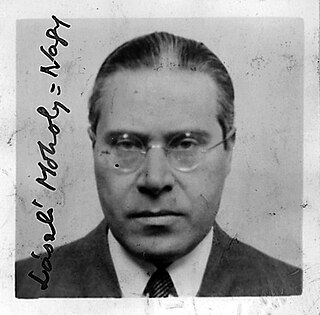
László Moholy-Nagy was a Hungarian painter and photographer as well as a professor in the Bauhaus school. He was highly influenced by constructivism and a strong advocate of the integration of technology and industry into the arts. The art critic Peter Schjeldahl called him "relentlessly experimental" because of his pioneering work in painting, drawing, photography, collage, sculpture, film, theater, and writing.
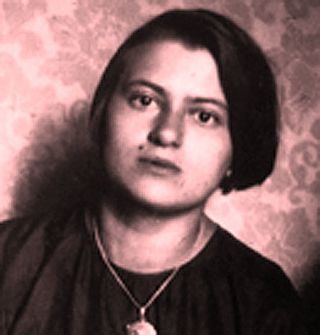
Marianne Brandt was a German painter, sculptor, photographer, metalsmith, and designer who studied at the Bauhaus art school in Weimar and later became head of the Bauhaus Metall-Werkstatt in Dessau in 1928. Today, Brandt's designs for household objects such as lamps and ashtrays are considered timeless examples of modern industrial design. Although she pursued painting early in life and attended a private art school and the Grand Ducal College of Art in Weimar from 1912–1917, where she produced many works in the Expressionists style and also studied sculpture, the artist is best known for her sleek and elegant industrial designs.Brandt also worked with photography at the Bauhaus, taking photographs that featured unusual angles—in particular, self-portraits—and disorienting and distorting reflections in glass and metal surfaces.She worked as head of the design department of the company Ruppelwerk Metallwarenfabrik GmbH in Gotha until 1932. In 1949, she worked at the University of Applied Arts until 1954. In the year, 1954 she also supervised the exhibition The German applied art of the GDR in Beijing and Shanghai in 1953–54. She also created photomontages.
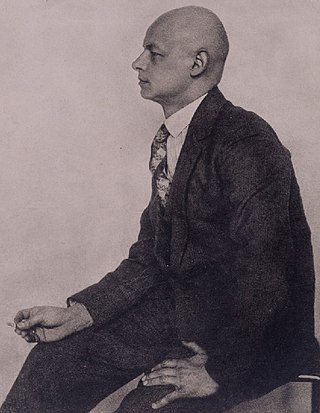
Oskar Schlemmer was a German painter, sculptor, designer and choreographer associated with the Bauhaus school.
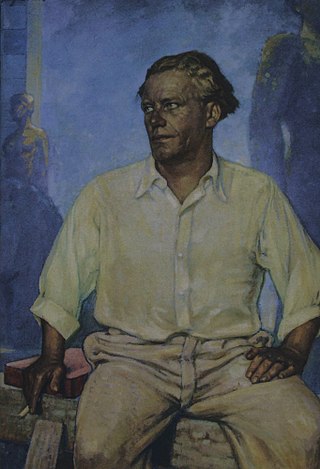
Josef Thorak was an Austrian-German sculptor. He became known for oversize monumental sculptures, particularly of male figures, and was one of the most prominent sculptors of the Third Reich.

Anni Albers was a German-Jewish visual artist and printmaker. A leading textile artist of the 20th century, she is credited with blurring the lines between traditional craft and art. Born in Berlin in 1899, Fleischmann initially studied under impressionist painter Martin Brandenburg from 1916 to 1919 and briefly attended the Kunstgewerbeschule in Hamburg in 1919. She later enrolled at the Bauhaus, an avant-garde art and architecture school founded by Walter Gropius in Weimar in 1922, where she began exploring weaving after facing restrictions in other disciplines due to gender biases at the institution.

Lucian Bernhard was a German graphic designer, type designer, professor, interior designer, and artist during the first half of the twentieth century.

Lilly Reich was a German designer of textiles, furniture, interiors, and exhibition spaces. She was a close collaborator with Ludwig Mies van der Rohe for more than ten years during the Weimar period from 1925 until his emigration to the U.S. in 1938. Reich was an important figure in the early Modern Movement in architecture and design. Her fame was posthumous, as the significance of her contribution to the work of Mies van der Rohe and others with whom she collaborated with only became clear through the research of later historians of the field.

Gunta Stölzl was a German textile artist who played a fundamental role in the development of the Bauhaus school's weaving workshop, where she created enormous change as it transitioned from individual pictorial works to modern industrial designs. She was one of a small number of female teachers on the Bauhaus' staff and the first to hold the title of "Master".

Frans Wildenhain also known as Franz Rudolf Wildenhain was a Bauhaus-trained German potter and sculptor, who taught for many years at the School for American Craftsmen at the Rochester Institute of Technology in Rochester, New York.
Bruno Maria Adler was a German art historian and writer. He taught art history in Weimar and lectured about it at the Bauhaus. Adler fled Germany after the Nazis seized power and emigrated to England, where he worked first at a German-Jewish refugee school in Kent, then as a writer with the German Service of BBC Radio.

Marg Moll was a German sculptor, painter and author.
Margaretha Reichardt, also known as Grete Reichardt, was a textile artist, weaver, and graphic designer from Erfurt, Germany. She was one of the most important designers to emerge from the Bauhaus design school's weaving workshop in Dessau, Germany. She spent most of her adult life running her own independent weaving workshop in Erfurt, which was under Nazi rule and then later part of communist East Germany.

The Bauhaus was seen as a progressive academic institution, as it declared equality between the sexes and accepted both male and female students into its programs. During a time when women were denied admittance to formal art academies, the Bauhaus provided them with an unprecedented level of opportunity for both education and artistic development, though generally only in weaving and other fields considered at the time to be appropriate for women.
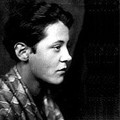
Alma Siedhoff-Buscher, born Alma Buscher, was a German designer. She trained at the Reimann School in Berlin, the Unterrichtsanstalt des Kunstgewerbemuseums Berlin and the Bauhaus.
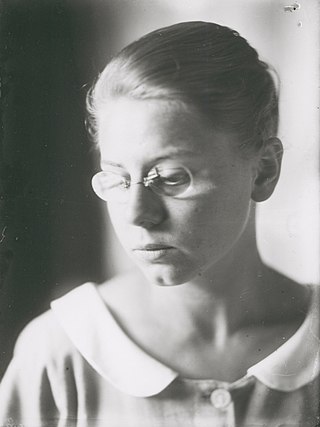
Lou Scheper-Berkenkamp née Hermine Luise Berkenkamp was a German painter, colour designer, the avant-garde author of children's books, fairy-tale illustrator and costume designer.

Benita Koch-Otte, born Benita Otte, was a German weaver and textile designer who trained at the Bauhaus.

Irmgard Sörensen-Popitz frequently known as Söre Popitz was a German graphic designer who studied at the Bauhaus.
Helene Nonné-Schmidt was a German professor for art at the Ulm School of Design and a textile artist at the Bauhaus.